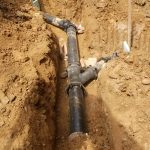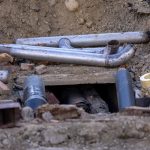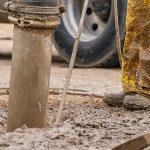New National Accreditation Requirements for Service Locating
Service locating is necessary for all underground work; without it, there is a high chance your work will cause damage to underground equipment such as gas, electricity, water and communications infrastructure.
Within this industry, there are new national accreditation requirements in play, and it pays to know something about them. Most of all, the new standards aim to make all servicers more consistent with one another, ensuring everyone working in service locating has the same skills and knowledge.
Dial Before You Dig (DBYD) has heard asset owners’ concerns and set to creating a national standard that puts all locators on the same page in regard to their skill sets.
DBYD implemented a joint project with National Utility Locating Contractor Association (NULCA) and utility asset owner Telstra to develop the new guidelines. In fact, the nationwide telecommunications company Telstra was the first body to endorse the new locator certification as a component of their training program.
The new accreditation is competency-based and includes both theory and practical assessments to ensure services are covered for all the activities they’ll need to complete.
Industry issues
There are a couple of reasons why DBYD needed to update the accreditation requirements, besides inconsistencies in labourers’ knowledge bases. The new regulations aim to address the following points, too.
Number one, there is a difference between the design and construction of an area. Some companies may submit incomplete plans to DBYD, and these plans may not be true-to-life. It’s a fact that service utility companies don’t often install cables in a straight line. However, when you look at the plans, it seems like they’re laid straight. It’s worth remembering that plans may be schematic, and may not fully represent reality, where cables don’t travel straight.
The second problem is the plans you receive from DBYD may also neglect to list all of the assets in that particular location. They may list one or two cables but miss the gas mains, or include the mains but not one of the cables. They should be treated as a guide only.
There is also the issue of consultants not providing site personal access to manage the process. From a workplace standpoint, this means management often foregoes control of the site, and is unable to make decisions easily.
It’s clear that the new requirements for service locating will go a long way to alleviate some of the issues found in the DBYD framework, to make for safer worksites for all involved.
Related Posts

Subsurface Utility Engineering (SUE): Reducing Risk and Improving Projects
Construction and infrastructure projects across Australia face numerous challenges, from managing budgets and timelines to ensuring safety and minimising disruptions.
Read more
PUP Underground Locating: Essential for Safe Excavation
Excavation is a necessary activity which ranges from large infrastructure projects to smaller residential works.
Read more
Non-Destructive Digging: The Safe and Efficient Way to Excavate
Traditional excavation methods, involving heavy machinery and extensive digging, often pose significant risks to underground utilities, the environment, and worker safety.
Read moreTalk with us today to find out more
Please call and speak with one of our friendly members of staff or send us an email using our contact form